Among the candidates for marriage with the Polish king, there was Piastówna, as well as the emperor's granddaughter. However, a princess from an "exotic" Italian family was chosen. Why?
When Sigismund the Old began to rule in the Polish-Lithuanian Commonwealth in 1507, his family ruled over a large area of Central Europe. Not only Poland and Lithuania were in the hands of the dynasty, but also the Czech Republic and Hungary. Nevertheless, the lands of the Polish king were threatened by many opponents:the Teutonic Knights, Moscow, Tatars and Wallachians. The Habsburgs also had an appetite for the Jagiellonian property.
In order to maintain his international position, the ruler had to make some alliances. It seemed a good idea to settle with the Habsburgs. The latter slowly became the most powerful family in Europe. Their dynastic policies were beginning to bring great benefits. They won the imperial throne, and through brilliant marriages they took control of the Netherlands and Spain. The next successes came in the following years.
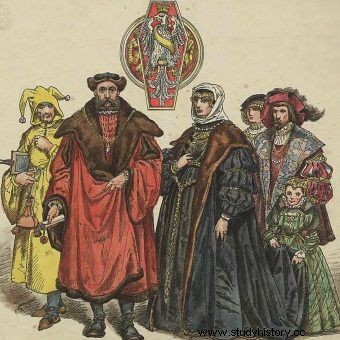
Bona Sforza and Zygmunt Stary in a drawing by Jan Matejko.
In 1515, Sigismund met in Vienna with his brother Władysław Jagiellończyk, king of Bohemia and Hungary, and with Emperor Maksymilian Habsburg. The main topic of the meeting was the common policy against the Turks. But other arrangements were just as important. In return for the support received from the Jagiellonians, the emperor resigned from the alliance with Moscow and the Teutonic Knights. The agreement was sealed by two marriages between the Habsburgs and the Jagiellons of the Czech-Hungarian line.
Mazovia or an alliance with the emperor
It quickly turned out that the Polish king also needed a new marriage. Only a few months after the Vienna Congress, his first wife, Barbara Zapolya, died. Zygmunt had two daughters with her, but no son, so the matter of the succession to the throne in Poland was left open.
It is worth adding that the bachelor was not young at all. In 1517, when the search for a new wife entered the decisive phase, he was over 50 years old. It was not certain if there would be any more descendants.
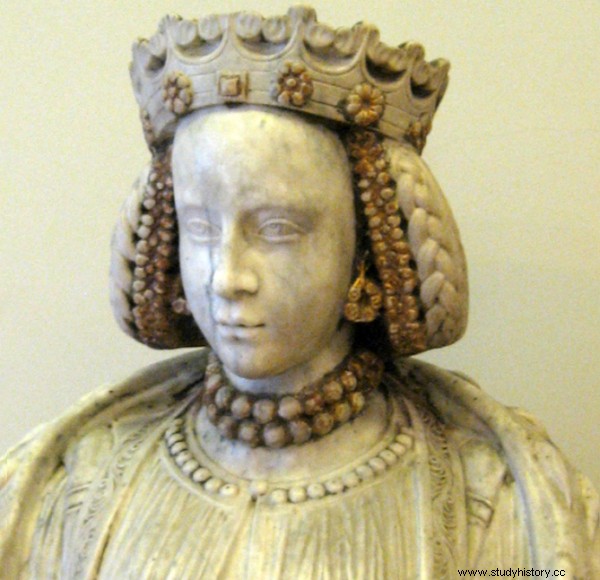
The first wife of Zygmunt Jagiellończyk was Barbara Zápolya. The photo shows a bust of the ruler by an unknown sculptor.
Since the ruler's marriage was tantamount to a political alliance, the king's entourage began to design various alliances. There were two directions at stake. First, the Mazovia ruled by the Piasts was taken into account. Primate Jan Łaski was an advocate of this solution. He wanted that after the death of Jagiellon, the Polish throne would fall into the hands of the old Polish dynasty . That is why he intended to bring about a relationship between Zygmunt and the widow-duchess Anna or her daughter, who ruled Mazovia, and planned to marry two princesses for the sons of the Duchess of Mazovia:Janusz and Stanisław. The result would be the annexation of Mazovia to Poland and securing the succession to the throne in Krakow. If the monarch did not have male heirs, it would be Janusz or Stanisław - the Piasts who would take over the crown.
The second option was the Habsburg proposals. Emperor Maximilian presented his own candidates, who were also supported by Pope Leo X. The most "prestigious" was Eleanor, the teenage daughter of Philip the Beautiful and Joanna Szalona, the granddaughter of the emperor himself. She had a dowry of 300,000 ducats and a vague prospect of inheriting Flanders and Burgundy. Apart from her, there was also Bona Sforza, the niece of the Emperor's wife, "worth" 200,000 ducats. She allegedly was sure of inheriting her mother's estate in southern Italy. Interestingly, her age was slightly undercut, informing Zygmunt that she was 19. In fact, she was already 23 years old and a mature woman.
Beautiful and educated
Before making his choice, the king consulted the senators. Sam was leaning towards Eleanor. No wonder - she seemed to be the best candidate, related or related to the most important courts in Europe.
But then Bona's mother, Izabela Aragońska, entered the stage. It launched a wide-ranging promotional campaign in Poland. The possibility of winning the Vistula crown was a unique opportunity for her daughter. The preventive duchess gathered supporters and sent her representatives to the court of Sigismund. One of them was Bona's teacher, Chrysostom Colonna, who praised his pupil to the heavens. In turn, Jan Dantyszek received several thousand ducats for recommending the girl to the king. The imperial envoy in Poland was also paid. Thus, the number of followers of the Italian princess began to grow.
Who exactly was the royal candidate daughter of Prince Giangaleazzo Sforza? Her father was the heir of Milan, but he died, so his uncle Ludovico took over the city. The princess's mother, in turn, was the daughter of the King of Naples, Alfonso II, of the Aragonese dynasty. The origin of the future Polish monarch was therefore good, although it must be admitted that the Sforza family was losing its political importance . As a result, Bona's matrimonial appeal gradually diminished.
The girl's personal story was also complicated. In the first years of her life, deprived of her father, she wandered around Italy with her mother, relying on the kindness of relatives and relatives. Its situation improved only at the beginning of the 16th century. Isabella then received from the King of Naples two southern Italian principalities, Bari and Rossano.
Bona grew up there. She was also a frequent visitor to Naples, where the entire aristocratic elite gathered at that time. The splendor of the local court was sung by poets. The young princess has become the object of sighs and the muse of artists. For example, the novel "Question de amor" has survived, the main character of which Belisen was modeled on a lady from the Sforza family.
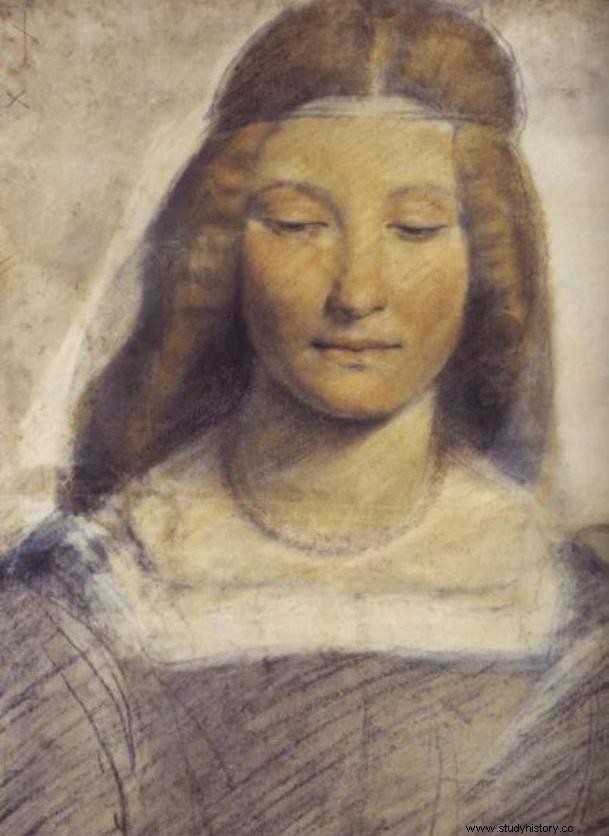
Bona's mother Izabela Aragońska in a portrait by Giovanni Antonio Boltraffio.
The future wife of Zygmunt received a thorough education. While striving for great fame, she acquired literary refinement and artistic taste. She also learned about the mechanisms that govern politics. It is known that she was fluent in Latin and spoke perfectly. She allegedly knew the poems of Petrarch, the letters of Cicero and the books of Virgil by heart. She played several instruments and danced brilliantly. Plus, she was beautiful.
Interestingly, the pamphlets created at the end of the century accused Bona, her mother and other women around them of practicing debauchery. However, these sources do not withstand the criticism of historians. Although the atmosphere of the Neapolitan court was relaxed, the princess who hunted for a good marriage was definitely content with other delights.
The hunt for a king
Izabela was looking for a suitable husband for her daughter for a long time. For example, Bona was matched with her cousin, the Duke of Milan. Such a marriage would enable Bona and her mother to return to the city of Giangaleazza Sforza. There were also attempts to marry Sforzówna to the Prince of Savoy Philip, and even to Ferdinand Habsburg, the future emperor. However, her background turned out to be politically too weak.
Nevertheless, when her hand was offered to the Polish king, the candidate herself had a choice. Well, the king of France, rivaling the emperor, tried to thwart the ranks of the Habsburgs and lead the girl to marry one of the Medici.
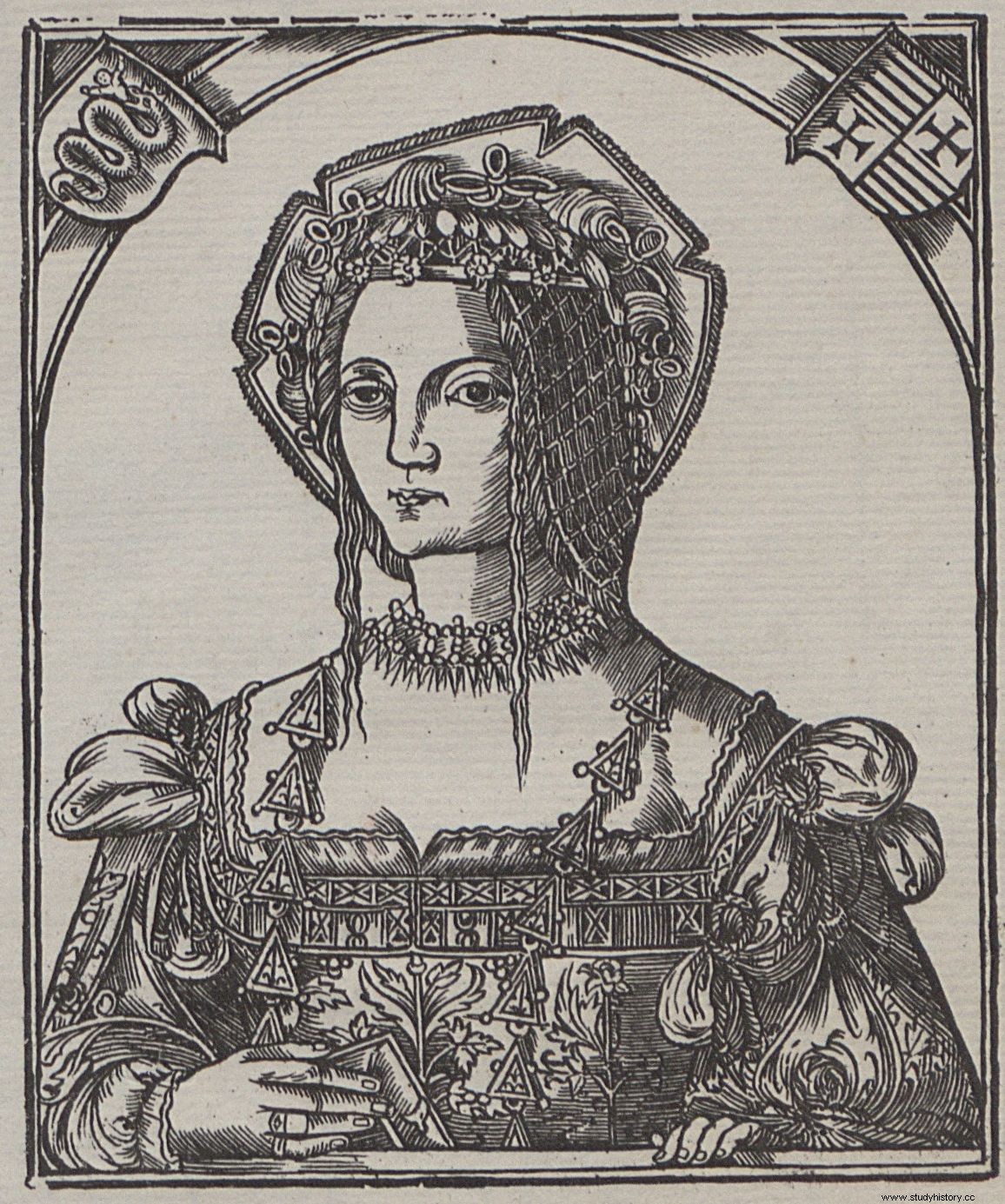
Izabela's opponents accused her and Bona of practicing debauchery. However, there is no evidence for this. The illustration shows a woodcut from 1521 showing Bona.
In the end, everything went according to Izabela's plan. Eleanor, Sforza's main competitor, was promised the King of Portugal, and the states of Spain and Burgundy spoke out against the "Polish option". Meanwhile, the duchess' envoys did not fall asleep in the ashes:they offered Zygmunt the Old a portrait of her daughter. The king liked the image very much. Soon he decided to go Italian.
The negotiations lasted several months and, admittedly, they were not conducted favorably for Poland. The king agreed to break the dowry in installments, and Bona's Southern Italian legacy was not properly secured . Jagiellon was satisfied with the emperor's oral promises in this matter. The wedding, which was planned to be held in Vienna, was finally held in Naples.
Wedding per procura (without the presence of the spouse) took place on December 6, 1517. It was a great triumph for Izabela. The entire local aristocracy took part in the celebrations. Among the guests were the poet Vittoria Colonna, the bride's cousin, and Princess Joanna d'Aragona, the greatest beauty of the era. Stanisław Ostroróg appeared as the representative of the Polish king. It was he who, on behalf of the king, put Bona on her finger with a diamond ring with the inscription:"May God bless you and give you wonderful children." Then he kissed the two fingers of his right hand, touched Bona's forehead with them, kissed them again and made a deep bow.
The Queen appeared in Poland in the spring of 1518 and quickly found herself at an unknown northern court. She quickly became a mother, which strengthened her position. Already in 1519, Izabela was born, and in 1520, the long-awaited heir to the throne - Sigismund Augustus.
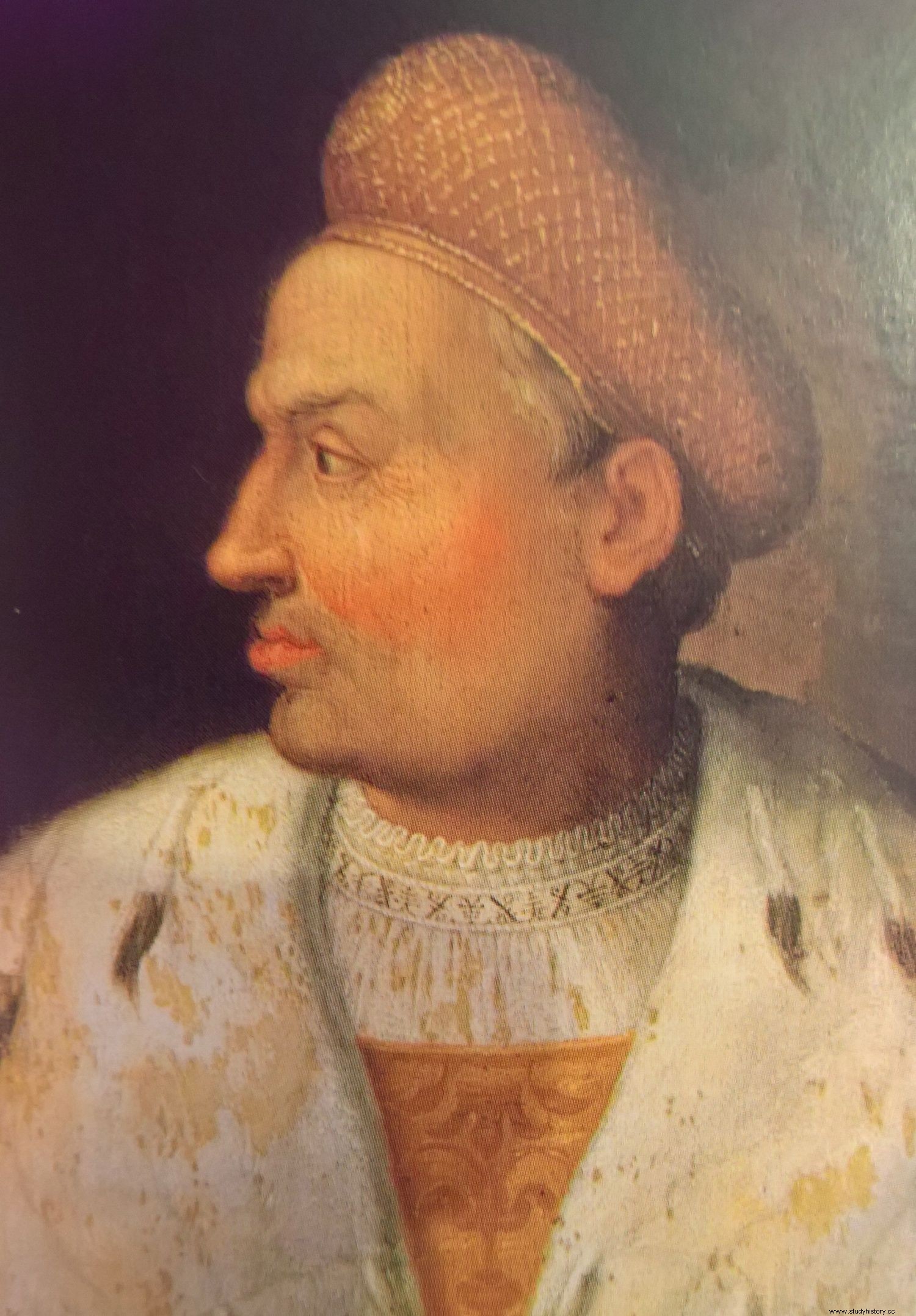
Portrait of Sigismund the Old from 1511-1518.
Together with the second wife of Zygmunt Stary, a thoroughly modern approach to politics appeared in Poland. Cynical and calculating, accustomed to the impermanence of alliances, the queen often acted on her own, and sometimes also replaced her husband . She was actively involved in domestic and international politics. In Krakow, she removed uncomfortable people from the throne, and promoted those she thought were useful. She created her own party. Finally, it had an influence on Polish cuisine, fashion and art.
Bona remains one of the most controversial Polish queens to this day, but one thing is certain. From the moment she appeared at Wawel, nothing was there the same as before. Poland found itself in the sphere of the influence of the mature Southern Renaissance.
Inspiration:
The article was inspired by a biographical novel by Magdalena Niedźwiedzka entitled Bona , Prószyński Media 2018.
